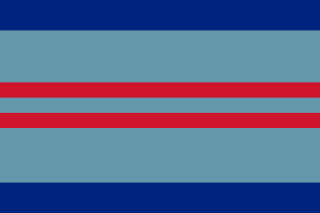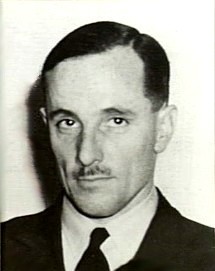Related Research Articles

The Royal Australian Navy (RAN) is the naval branch of the Australian Defence Force. Following the Federation of Australia in 1901, the ships and resources of the separate colonial navies were integrated into a national force, called the Commonwealth Naval Forces. Originally intended for local defence, the navy was granted the title of 'Royal Australian Navy' in 1911, and became increasingly responsible for defence of the region.

The Royal Australian Air Force (RAAF), formed in March 1921, is the aerial warfare branch of the Australian Defence Force (ADF). It operates the majority of the ADF's fixed wing aircraft, although both the Australian Army and Royal Australian Navy also operate aircraft in various roles. It directly continues the traditions of the Australian Flying Corps (AFC), formed on 22 October 1912. The RAAF provides support across a spectrum of operations such as air superiority, precision strikes, intelligence, surveillance and reconnaissance, air mobility, space surveillance, and humanitarian support.

Group captain is a senior commissioned rank in many air forces. Group captain has a NATO rank code of OF-5, meaning that it ranks above wing commander, immediately below air commodore and is the equivalent of the naval rank of captain and the rank of colonel in other services.

Air vice-marshal (AVM) is a two-star air officer rank which originated in and continues to be used by the Royal Air Force. The rank is also used by the air forces of many countries which have historical British influence and it is sometimes used as the English translation of an equivalent rank in countries which have a non-English air force-specific rank structure. Air vice-marshals may be addressed generically as "air marshal".
Flight Lieutenant is a junior commissioned rank in air forces that use the Royal Air Force (RAF) system of ranks, especially in Commonwealth countries. It has a NATO rank code of OF-2. Flight lieutenant is abbreviated as Flt Lt in the Indian Air Force (IAF) and RAF, and as FLTLT in the Pakistan Air Force (PAF), Royal Australian Air Force (RAAF) and Royal New Zealand Air Force (RNZAF) and has sometimes also been abbreviated as F/L in many services; however, it has never been correctly abbreviated as "lieutenant". A flight lieutenant ranks above flying officer and below a squadron leader and is sometimes used as an English language translation of a similar rank in non-English-speaking countries.

The Women's Auxiliary Air Force (WAAF), whose members were referred to as WAAFs, was the female auxiliary of the Royal Air Force during World War II, established in 1939. At its peak strength, in 1943, WAAF numbers exceeded 180,000, with over 2,000 women enlisting per week.

Air Marshal Geoffrey David Shepherd is a retired senior officer in the Royal Australian Air Force (RAAF), who served as Chief of Air Force from 2005 until 2008.

Princess Mary's Royal Air Force Nursing Service (PMRAFNS) is the nursing branch of the British Royal Air Force.

The Women's Auxiliary Australian Air Force (WAAAF) was formed in March 1941, after considerable lobbying by women keen to serve and by the Chief of the Air Staff, who wanted to release male personnel serving in Australia for service overseas. The WAAAF was the first and largest of the wartime Australian women's services. It was disbanded in December 1947.

Air Marshal Sir Colin Thomas Hannah, was a senior commander in the Royal Australian Air Force (RAAF) and a Governor of Queensland. Born in Western Australia, he was a member of the Militia before joining the RAAF in 1935. After graduating as a pilot, Hannah served in Nos. 22 and 23 Squadrons from 1936 to 1939. During the early years of World War II, he was the RAAF's Deputy Director of Armament. He then saw action in the South West Pacific as commander of No. 6 Squadron and, later, No. 71 Wing, operating Bristol Beaufort bombers. By 1944, he had risen to the rank of group captain, and at the end of the war was in charge of Western Area Command in Perth.

Clare Grant Stevenson, AM, MBE was the inaugural Director of the Women's Auxiliary Australian Air Force (WAAAF), from May 1941 to March 1946. As such, she was described in 2001 as "the most significant woman in the history of the Air Force". Formed as a branch of the Royal Australian Air Force (RAAF) in March 1941, the WAAAF was the first and largest uniformed women's service in Australia during World War II, numbering more than 18,000 members by late 1944 and making up over thirty per cent of RAAF ground staff.

Air Vice-Marshal Joseph Eric Hewitt, CBE was a senior commander in the Royal Australian Air Force (RAAF). A Royal Australian Navy officer who transferred permanently to the Air Force in 1928, he commanded No. 101 Flight in the early 1930s, and No. 104 (Bomber) Squadron RAF on exchange in Britain shortly before World War II. Hewitt was appointed the RAAF's Assistant Chief of the Air Staff in 1941. The following year he was posted to Allied Air Forces Headquarters, South West Pacific Area, as Director of Intelligence. In 1943, he took command of No. 9 Operational Group, the RAAF's main mobile strike force, but was controversially sacked by the Chief of the Air Staff, Air Vice Marshal George Jones, less than a year later over alleged morale and disciplinary issues.

Women currently make up 17.9% of the ADF workforce. Women have served in Australian armed forces since 1899. Until World War II women were restricted to the Australian Army Nursing Service. This role expanded in 1941–42 when the Royal Australian Navy (RAN), Australian Army and Royal Australian Air Force established female branches in which women took on a range of support roles. While these organisations were disbanded at the end of the war, they were reestablished in 1950 as part of the military's permanent structure. Women were integrated into the services during the late 1970s and early 1980s, but were not allowed to apply for combat roles until 2013. Women can now serve in all positions in the Australian Defence Force (ADF), including the special forces.

Air Vice Marshal Henry Neilson Wrigley, CBE, DFC, AFC was a senior commander in the Royal Australian Air Force (RAAF). A pioneering flyer and aviation scholar, he piloted the first trans-Australia flight from Melbourne to Darwin in 1919, and afterwards laid the groundwork for the RAAF's air power doctrine. During World War I, Wrigley joined the Australian Flying Corps and saw combat with No. 3 Squadron on the Western Front, earning the Distinguished Flying Cross; he later commanded the unit and published a history of its wartime exploits. He was awarded the Air Force Cross for his 1919 cross-country flight.

Air Vice Marshal Ellis Charles Wackett, CB, CBE was a senior commander in the Royal Australian Air Force (RAAF). Its chief engineer from 1935 to 1959, he served on the RAAF's controlling body, the Air Board, for a record seventeen years, and has been credited with infusing operations with new standards of airworthiness. Commencing his service career as a Royal Australian Navy cadet during World War I, Wackett transferred to the Air Force in 1923 while on an engineering course in Britain. He qualified as a pilot before completing his studies and returning to Australia, where he inaugurated parachute instruction within the RAAF and made the country's first freefall descent from a military aircraft in 1926. The following year, he led a three-month survey flight to Papua New Guinea.

Mary Teston Luis Bell was an Australian aviator and founding leader of the Women's Air Training Corps (WATC), a volunteer organisation that provided support to the Royal Australian Air Force (RAAF) during World War II. She later helped establish the Women's Auxiliary Australian Air Force (WAAAF), the first and largest women's wartime service in the country, which grew to more than 18,000 members by 1944.

The New Year Honours 1953 for the United Kingdom were announced on 30 December 1952, to celebrate the year passed and mark the beginning of 1953. This was the first New Year Honours since the accession of Queen Elizabeth II. The Honours list is a list of people who have been awarded one of the various orders, decorations, and medals of the United Kingdom. Honours are split into classes ("orders") and are graded to distinguish different degrees of achievement or service, most medals are not graded. The awards are presented to the recipient in one of several investiture ceremonies at Buckingham Palace throughout the year by the Sovereign or her designated representative.
The 1972 Queen's Birthday Honours were appointments to orders and decorations of the Commonwealth realms to reward and highlight citizens' good works, on the occasion of the official birthday of Queen Elizabeth II. They were announced in supplements to the London Gazette of 23 May 1972 for the United Kingdom, Australia, New Zealand, Mauritius, Fiji, and Barbados. At this time honours for Australians were awarded both in the United Kingdom honours on the advice of the premiers of Australian states, and also in a separate Australia honours list.

The Air Board, also known as the Administrative Air Board, or the Air Board of Administration, was the controlling body of the Royal Australian Air Force (RAAF) from 1921 to 1976. It was composed of senior RAAF officers as well as some civilian members, and chaired by the Chief of the Air Staff (CAS). The CAS was the operational head of the Air Force, and the other board members were responsible for specific areas of the service such as personnel, supply, engineering, and finance. Initially based in Melbourne, the board relocated to Canberra in 1961.
Lois Katrine Pitman, was an Australian military officer and social worker. She served as director of the Women's Royal Australian Air Force (WRAAF) from 1960 to 1972.
References
- ↑ Libby Stewart (2014). "Australian Defence Force". The Encyclopedia of Women & Leadership in Twentieth-Century Australia. Australian Women's Archives Project.
- ↑ "Directors of the WRAAF" (PDF).
- ↑ Royal Australian Air Force. "Women in Air Force". Archived from the original on 20 July 2008. Retrieved 14 October 2008.